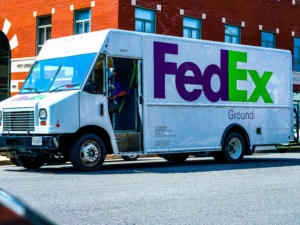Supply Chain Disruptions to Continue
Why Preparation is Key and 6 Tips to Help You Navigate What’s Next
In a recent blog post we addressed FedEx and their financial and delivery woes. Today, we dive deeper into the Supply Chain to give us a glimpse into the future. In an October 27, 2022 article, CSCMP, (Council of Supply Chain Management Professionals), quoted an SAP survey stating 52% of US-based senior business decision makers said their supply chains still needed “much improvement” and 49% expected these issues to last until the summer of 2023.
We certainly agree; between the political unrest in the world, a shortage of raw materials and rising fuel costs, supply chain disruptions will continue to be a major issue for companies and consumers. Take the auto industry for example. Without computer chips, they cannot deliver cars. Combine that with the rising cost of pre-owned cars, prices are soaring and delivery times are lengthening.

Another example is the housing market. With limited inventory for sale, prices climbed 20-30% during the pandemic. Buyers were paying as much as $100,000 over asking, with a line of buyers right behind them willing to meet the price. You would think, with the limited inventory, new construction would be up, but the cost of raw materials and the availability of getting them has slowed the new housing market. A friend recently ordered a new refrigerator and was told 10-12 week’s minimum before delivery.
And the supply chain shortages aren’t just about products, it’s people too. With the “Great Resignation,” we continue to face a major labor shortage. Unemployment is low with more jobs than people and yet companies can’t find the right people for the jobs they are seeking to fill. This puts pressure on wages to rise and prices to increase, resulting in inflation, lower profits and ultimately workforce reductions. Specifically add to these the shortage of drivers and we are living the perfect storm and a vicious cycle.
During this election cycle, the economy was the #1 concern for voters. The SAP survey highlighted a big concern for increased prices leading shoppers to reduce their planned holiday spending. But this might be what economists were aiming for, a slowing down of the economy with the aim of avoiding a recession.

What can Supply Chain Executives do?
- Build strong(er) relationships with your current suppliers
- Increase and Capitalize on your Spend Influence
- Modernize your procurement process (digital transformation)
- Improve your analytical and reporting capabilities
- Be agile and willing to change where needed (have contingency plans)
- Minimize Risk and Show Stability
As people shift further and further to online shopping, things like speed of delivery, product availability and price reductions will weigh heavily on their minds. Shoppers see the only solution is to buy early so companies need to plan ahead. Once the model of most companies, “Just in Time” is rapidly changing to “Just in Case.” The fact is, those with inventory will ultimately get the sale.
In the end, we believe “Inventory will be King”. Shore up each segment of your supply chain and be prepared for a rough ride. We realize our message is at odds with itself, increasing inventory while reducing costs is hard to do. It might be too late for this holiday season, so start building inventory now to prepare for future near-term sales tomorrow and through 2023.
The need to continually focus on the Big Picture is critical for success. Plan properly; Execute flawlessly, validate continually, Modify when necessary.
Need help with your Big Picture? Our Supply Chain and Logistics Executives are here to help your company achieve all of its goals.













